
‘If one were to place Jan Švankmajer in a schemata which might signal a point of access to his work, it might be as someone who anticipated the low-rent, anti-technology, quasi-documentary suggestiveness of The Blair Witch Project (1999) and coupled it with the tactility and cinematic bravura of Dario Argento’s more coherent visual ideas. This significantly undervalues the distinctiveness of Švankmajer’s approach, of course, but points up an important tension at the heart of his work between his conception of “fantastic documentary” and the fundamental principles of “militant surrealism.”
‘Animation readily facilitates this co-existence because its intrinsic artifice effectively creates an ontological equivalence in all aspects of the textual apparatus, imbuing it with the simultaneous capacity to both amplify meanings and imperatives in the materials used and images constructed, while also potentially diluting their significance by working as a model of expression which in enunciating its illusionism offers the possibility of “innocence” and “distanciation.” Simply, this is one of the reasons why animated films—from Disney cartoons to Japanese animé—can be both viewed as conservatively “mainstream” and subversively “left-field” depending upon how they are received and interpreted. The issue underpinning this, of course, remains animation’s enduring identity (and burden) as “children’s entertainment.”
‘Švankmajer refuses this ghetto, however, not merely through the ways in which he uses the free, and in some ways, unregulatable language of animation, but in the way he perceives “the child.” He suggests, “I’m not at all sure that any work of art is unsuitable for children. When children are confronted by something they can’t understand, [they engage with it] so that it works by analogy, or they simply reject it and carry on as before. Adults have a very distorted idea of a child’s world; they are crueller, more animalistic, than we like to admit.
‘The principles of desire live on in a child, who still hasn’t been domesticated by the world; its imagination is that much freer.” It is clear here that in suggesting there are no aesthetic boundaries that a child may not cross, Švankmajer is already challenging the socially and legally determined parameters of what is, and what is not suitable for children. In this respect, too, he signals modes of transgression which may be understood as the necessary imperatives of the artist in the facilitation of exploring new ideas, and the rejection of the restrictions of “citizenry” during that process.
‘The “horror” here resides in the recognition that humankind is fundamentally driven by obsessive and compulsive needs and desires, often rooted in childhood anxieties, and played out in dream-states. Švankmajer “frightens” by prompting recognition of transgression, and by physicalising alternative perspectives. Švankmajer contemporises and materialises the documentation of his agit-scares through the “fabrication” of his mise-en-scène, noting that “Animation can bring the imagery of childhood back to life and give it back its credibility,” adding “The animation of objects upholds the truth of our childhood.”‘ — Paul Wells, Kinoeye
____
Stills


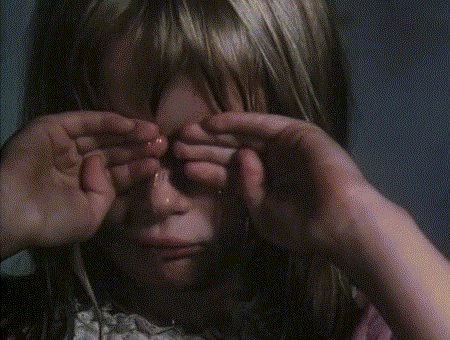
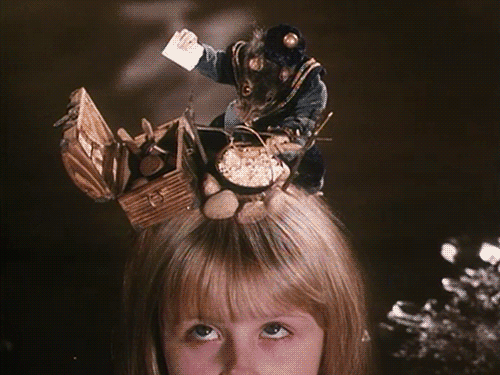

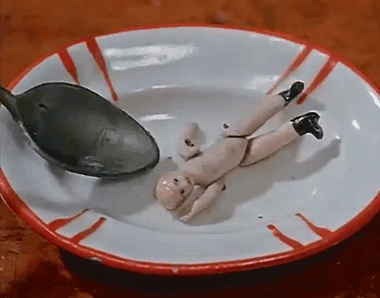
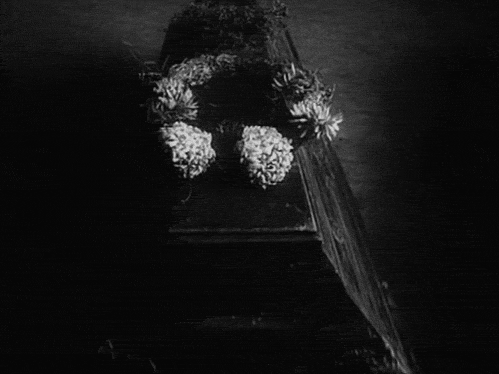
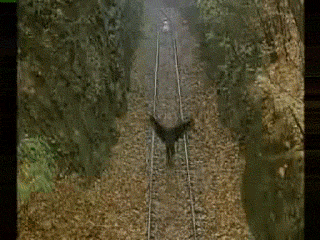
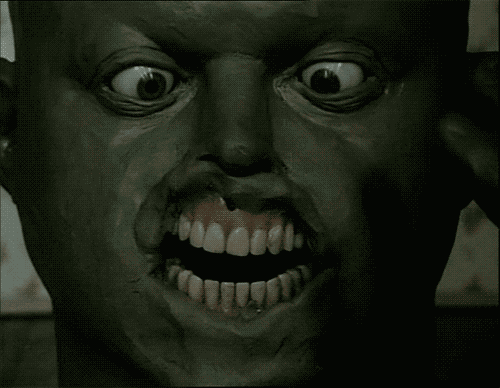
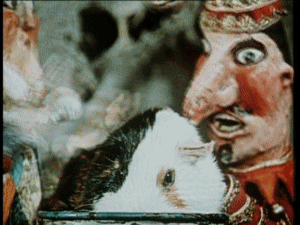
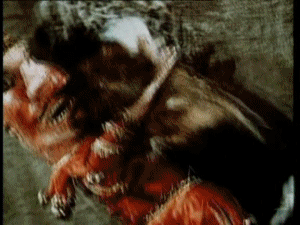
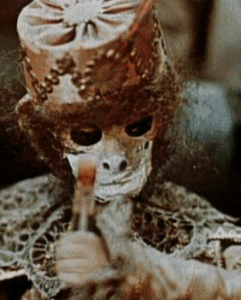
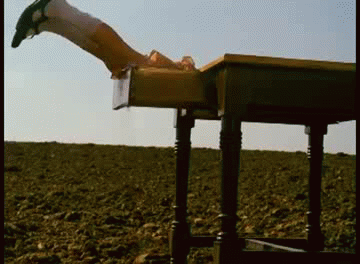
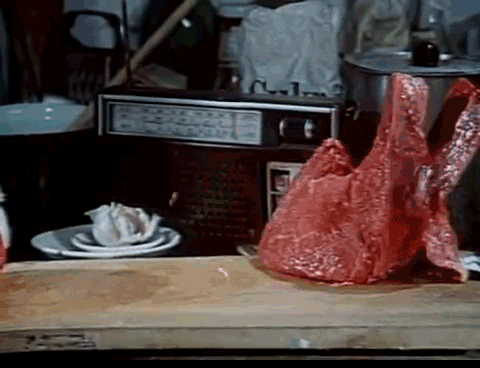
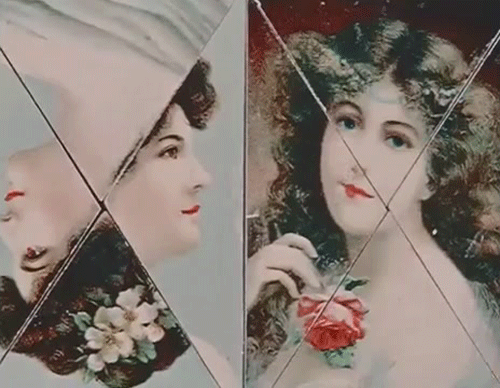

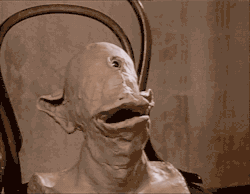
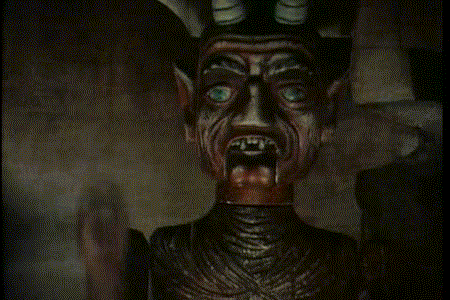

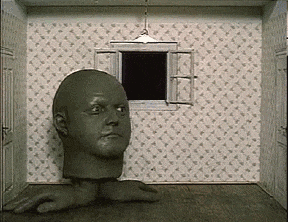


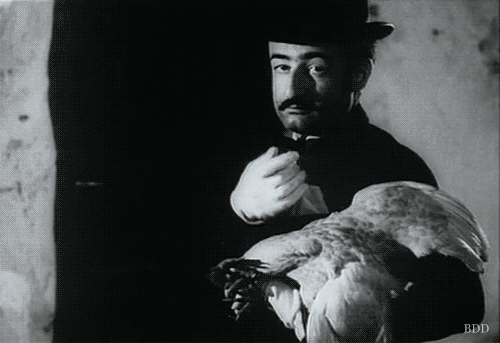
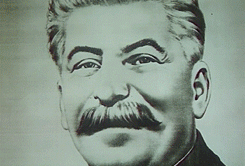

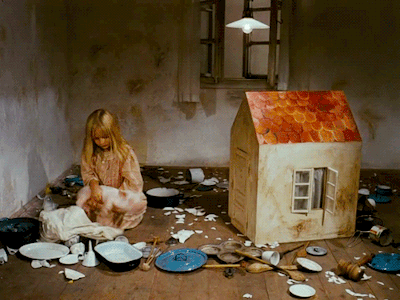














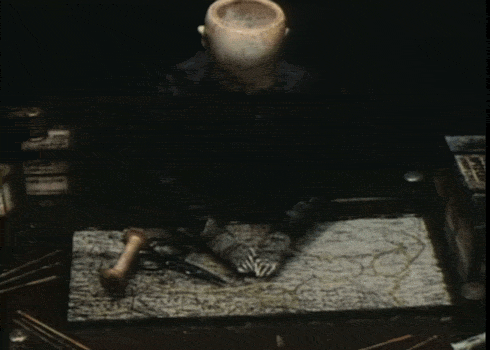
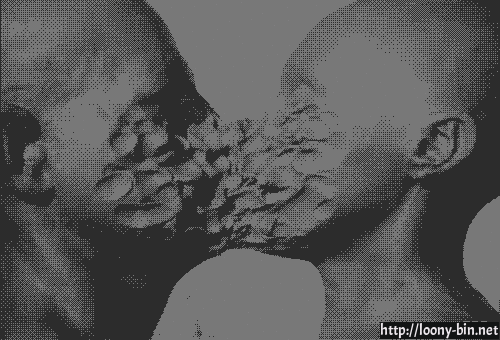



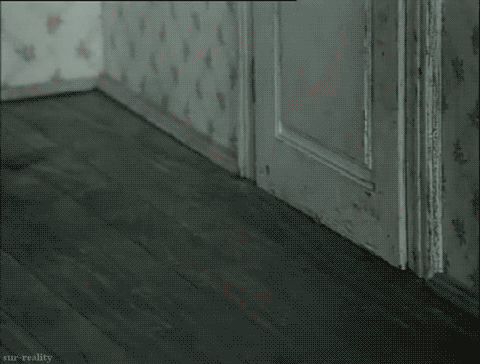
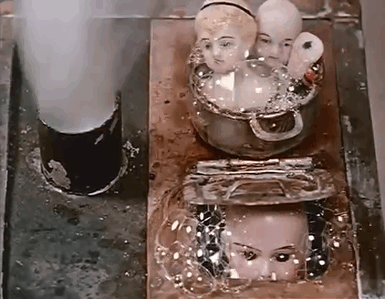
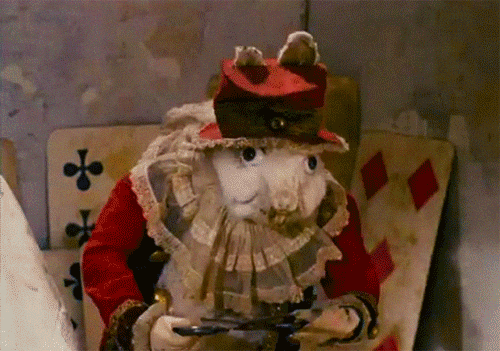

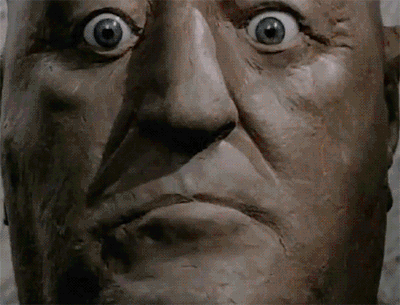
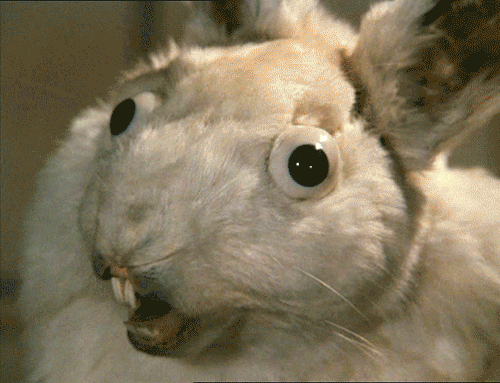
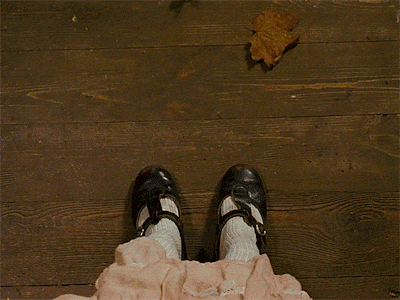

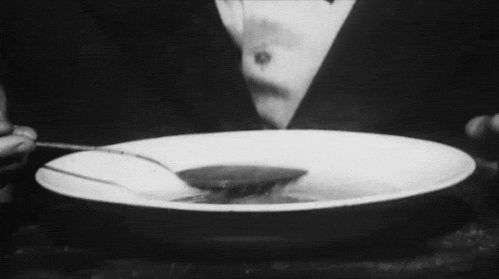

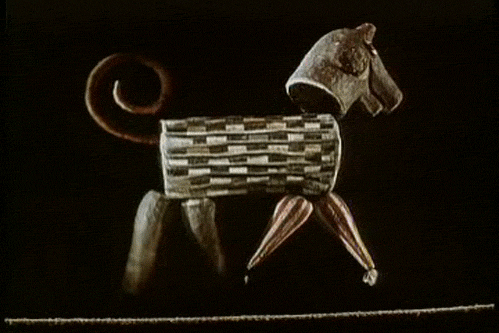


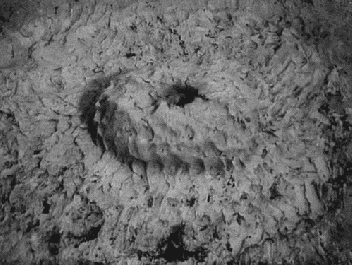
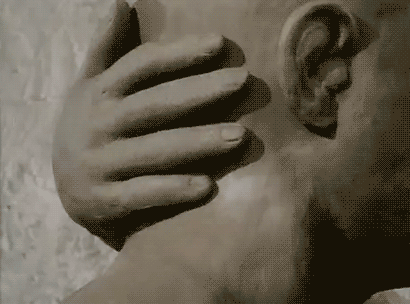




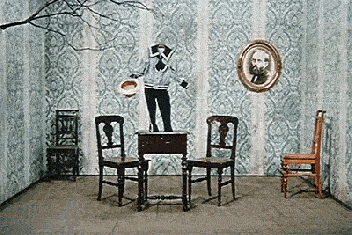
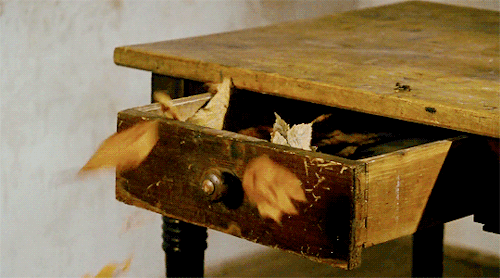




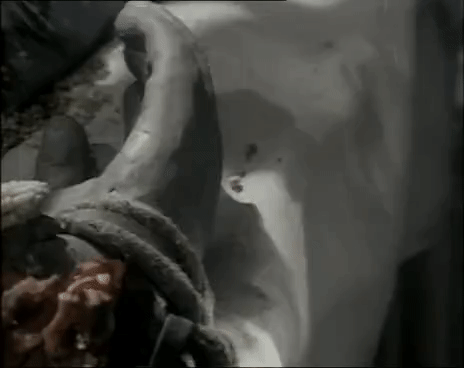
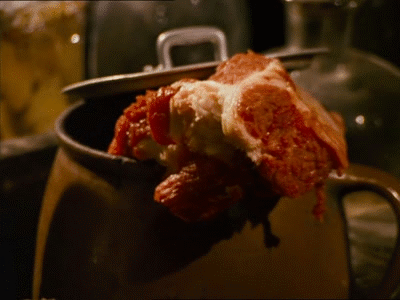
______
Further
Jan Svankmajer Official Website
Jan Svankmajer Fan Page
The Jan Svankmajer Home Page
Jan Svankmajer page @ Facebook
‘The Decalogue of Jan Švankmajer’
Jan Svankmajer’s ‘Little Otik’ Diary
‘Jan Švankmajer: Animated Self-Portrait’
Jan Svankmajer interviewed @ Electric Sheep
Book: ‘The Cinema of Jan Svankmajer: Dark Alchemy’
Jan Svankmajer DVDs
______
General
The Brothers Quay ‘The Cabinet of Jan Svankmajer’
Jan Švankmajer – IFFR Big Talk
Jan.Svankmajer – J.S.Bach.Fantasia.in.G.Minor
Darkness Light Darkness (1990) by Jan Svankmajer
Hugh Cornwell Another Kind of Love [dir. Jan Švankmajer, 1988]
_______
Interview
by Wendy Jackson
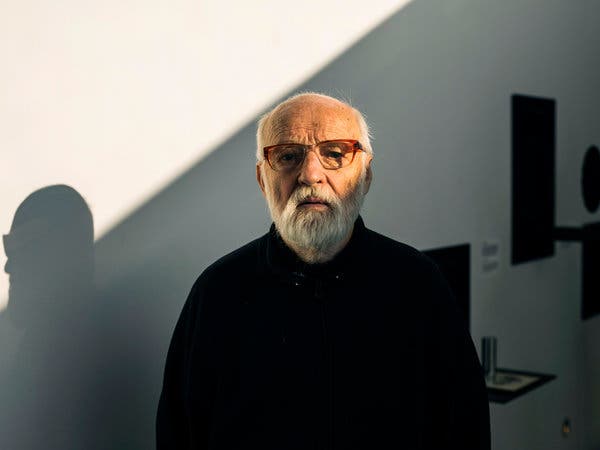
Would it be bold to say that Conspirators of Pleasure is your most Surrealist film to date?
Jan Svankmajer: Conspirators is actually a film about liberation, and about gaining a freedom. It is not art, but a film. Just as, for example, André Breton would not say “Surrealistic painting”, he would say “Surrealism in painting”. In the same way, I speak of Surrealism in film. Surrealism is psychology, it is philosophy, it is a spiritual way, but it is not an aesthetic. Surrealism is not interested in actually creating any kind of aesthetic. It was drawn as an element from various different artists, but it does not exist.
How can something so prevalent in your work be non-existent?
JS: Surrealism does exist, but it is not an art form. To characterize Surrealism, you can say it is the Romantic movement of the 20th century. Each romantic period expresses three elements: love, freedom and poetry. Each generation is seeking their own artistic expressions according to the environment and the time period they live in. The Romanticism of the 21st century will ask the same question. It doesn’t matter whether that Romanticism will be Culturalism, or something else.
You are very versatile in your filmmaking and other art, with the use many different techniques. Can you tell me something about your process for determining which medium should be employed to communicate or express a particular idea?
JS: I always say that I basically make my work “to order”, by which I mean to my “inner order”. It is really inside me, what’s going to come out. The way I see it, each individual accumulates in his or her lifetime. That which accumulates inside him or her needs to find a way out. Basically, everybody can do that, but most people do not find a way of releasing it, they have certain blockage. There is no such thing as talent.
No such thing as talent? That is a bold statement.
JS: It’s very simple. The artist is able to reach their resources, and overcome the block. But a clerk who sits in the office, obviously, has his blockage and cannot. This so-called “professionalism”, is much more a matter of technique, or skill than creativity. You can see that in naive art, or folk art, if an individual wants to express him or herself, they find a way to do it if they really want to.
You grew up in a time of such oppression of creativity and self-expression. How is it that you are so “lucky” as to not have this block, that you are able to realize your potential to express yourself through art?
JS: It’s a difficult question to answer. I believe there is a lot to it, including family influences. Certain children are just very difficult to handle. I was one of these children (laughs). For example, all children can draw. Some of them retain this ability until adult age, while in other children the ability is subsequently killed.
Rightly, you are often referred to as the “alchemist” of film.
JS: Yes, alchemy is about trying to connect things that you cannot connect, that are “un-connectable”. Poetry is a parallel for alchemy, and alchemy is a parallel for poetry.
_______________________
13 of Jan Švankmajer’s 40 films
____________
Punch and Judy (1966)
‘Probably the most densely allusive, frenetically charged film ever made about puppets hitting each other, Jan Švankmajer’s Punch and Judy is pretty extraordinary. At their best his short films are as tightly structured as incantations, delivering a sequence of actions and a barrage of images that somehow add up to a perfectly arranged whole. That’s not to say that it’s easy or even possible to draw conclusions about what it means, what the conjuration of that incantation might be, and the lack of easy explanation for all of its imagery is unsettling. If I give a recap of the plot, it might all seem very simple. After a prologue in which a band of automaton monkeys introduce the opening titles before the curtain rises on the stage within the film. Mr Punch is caring for his guinea pig. His neighbour Joey (another stock character from the Punch and Judy stories – note that, despite the title, Judy, along with all the other characters, is nowhere to be seen) envies the guinea pig and tries to buy it. Mr Punch refuses every cash offer, and they settle the dispute with violence, each taking turns to stuff the other into a coffin. It all ends with both characters dead and boxed, while the guinea pig strolls away through a hole in the scenery.’ — Spectacular Attractions
the entirety
__________
Jabberwocky (1971)
‘The spanked arse that opens the film like the clapstick that marks the start of a kabuki performance is not the only similarity to Todd Haynes’ Superstar. Both films use dolls and their mutilation to explore the degradation of the subject in the process of socialisation. That is, dolls in both cases are made into metaphors for the ways people’s bodies are not their own, but the blank objects onto which are carved the pressures and injunctions of families and society. Svankmajer’s dolls start out as the innocent embodiments of childhood, playthings invested with life by the animation process. Quickly, their innocence is polluted, and they are put to work in a series of actions that knock them into submissive shape. Birthed out of the inert body of a larger doll, they are installed in a house that spins them round and spits them out to be ground into food for more dolls. They are ironed flat, boiled and baked to sustain a cannibalistic circle of stunted life and grotesque death.’ — Spectacular Attractions
the entirety
_______________________
The Fall of the House of Usher (1980)
‘Even without understanding the voiceover (in softly lulling Czech) Svankmajer’s film soaks up the mysterious gloom of Edgar Allen Poe’s gothic story of death, doppelgangers and the claustraphobic weight of history. Like the story, it’s the house, brooding in the dusky light, that is the main character in Svankmajer’s film, dominating the landscape of barren trees and pulsating from foundation to roof with doom. Freed from any pesky humans (or even puppet people) to carry the narrative, it’s also the atmospheric house that Svankmajer uses to tell the tale, in crumbling plaster moulding itself into tormented shapes, words appearing out of dead leaves, blank faces appearing in walls and a coffin silently, clunkily and apparently singlemindedly weaving its own way through the rooms. This short film might be the best unlikely example of Svankmajer’s belief in the memories of materials and objects, and in the power of animation to free those memories.’ — The Spectral Dimension
the entirety
__________________
Dimensions of Dialogue (1982)
‘Divided into three separate dialogues entitled ‘Exhaustive Discussion,’ ‘Passionate Discourse’ and ‘Factual Conversation,’ Svankmajer indeed exhausts the subject of social interaction in this unbounded critique of human malfeasance. In the first dialogue, two anthropomorphized assemblages of food-stuffs and kitchen utensils respectively lurch towards one another with the latter devouring the former. In turn, this pattern is repeated when a collection of intellectual markers vies with the kitchen products destroying the returning collage with similarly ease. Next it is the now degraded food objects which sully the books, paints, etc., as though the two were mingling in some fictious trash bin. This process of disintegration continues with the resulting forms appearing closer and closer to the form of man himself.’ — Tativille
the entirety
____
Alice (1988)
‘After more than two decades as a prolific director of short films, Alice became Švankmajer’s first venture into feature-length filmmaking. The director had been disappointed by other adaptations of Carroll’s book, which interpret it as a fairy tale. His aim was instead to make the story play out like an amoral dream. Alice appears to be in her bedroom when a taxidermically stuffed rabbit comes to life and breaks out of its glass case. Alice follows the rabbit through the drawer of a desk into a cavern. She subsequently falls through a bucket and seemingly down an elevator shaft. Wonderland itself is a mix of drab household-like areas with incongruous relationships of space and size. The Queen’s execution sentences are carried out by the White Rabbit with a pair of scissors. At the film’s end, Alice wakes in her room, discovers that the rabbit is still missing from his glass case, and finds a secret compartment where he keeps scissors. She ponders whether or not she will cut his head off. The film is ambiguous about whether this room is Alice’s real world or “Wonderland.”‘ — Wikipedia
Trailer
the entirety
________
Meat Love (1989)
‘Meat Love is a short film directed and animated by Jan Švankmajer, released in 1989. It appears as a commercial in Švankmajer’s feature-length film Otesánek. It has also been shown on MTV. It depicts two slices of steak, personified as two individual beings with a consciousness, that become aware of each other and form a romantic relationship, showing the steaks dancing with one another. This soon leads to passionate love, exemplified by the steaks rolling around on a plate of flour, which can be seen to symbolise sexual intercourse. Their passion is killed, however, when the steaks are placed in a frying pan.’ — Marked Animation
the entirety
_________________________
The Death of Stalinism in Bohemia (1990)
‘In 1990, the year after the “Velvet Revolution” in Czechoslovakia, Jan Svankmajer made The Death of Stalinism in Bohemia and subtitled it “A work of Agitprop.” As these titles plainly demonstrate, it is the most political of all his films, attempting an overview of his country’s history after the Second World War. It is commonly believed that overt political comment within a work can badly affect its artistic value. The complexity and sophistication of artistic language is too often weakened when faced with the simplicity of political vocabulary. Accordingly, from the standpoint of the work of art, the relationship between art and politics is extremely delicate. Despite this, Svankmajer made an explicitly political film. Did he sacrifice the artistic value? If so, to what end? And what significance does the film have to its creator? It is a film that reveals the characteristics of Jan Svankmajer the Militant Surrealist. Svankmajer recognizes that Stalinism in its many guises is just one symptom of contemporary civilization, a civilization he believes that art must attack at its roots. It seems that Svankmajer intends to continue the fight against the absurdities of the human beings by means of his surrealist art.’ — The Slavic Research Center
the entirety
____
Faust (1994)
‘Svankmajer’s long awaited follow-up to his acclaimed Alice is an equally astounding version of the myth of Dr. Faustus. Merging live action with stop-motion and claymation animation, Svankmajer has created an unsettling universe presided over by diabolic life-sized marionettes and haunted by skulking human messengers from hell. Svankmajer’s Faust (movingly incarnated by one of the Czech Republic’s finest actors, Petr Cepek) is an ordinary, inquisitive everyman who, upon exiting a Prague subway station, is handed a map that draws him to his doom. Led to an abandoned theater he finds a copy of Goethe’s Faust, begins to read aloud, and unwittingly summons up a devil who offers him everything his heart desires in return for his soul. With breathtaking rapidity, Faust’s journey takes him to the tops of mountains, drops him in the middle of lakes, and sends him out onto the unsuspecting streets of Prague. Peopled with shape-changing demons and puppet versions of Goethe’s characters, Svankmajer’s tour-de-force is alternately hilarious and shocking, always unique, and ultimately unforgettable.’ — kino
Trailer
Excerpt
Excerpt
Excerpt
__________________
Conspirators of Pleasure (1996)
‘Svankmajer’s newest over-the-brink creation is Conspirators of Pleasure, the absorbing story of an obsessive handful of hardcore sexual fetishists whose lives intersect and dance around one other in serendipitous fashion. Conspirators of Pleasure is an erotic film, although not in the ways that we usually think of eroticism on film. That is, while sexuality is the film’s subject, the titillation factor here is low. For the most part, the characters remain fully clothed throughout. Importantly, there is no sexual intercourse, per se. Nobody talks dirty, because there’s no dialogue at all. Like pornography, communication here is almost completely nonverbal. What’s most gratifying to these motley sensualists — even the married couple, who pursue their own desires separately — is self-gratification. The film itself begins methodically, cross-cutting from story to story and growing ever more complicated as each minute passes. Finally, it achieves its own sort of orgasm, as the stories cross and interconnect, reaching a delirious climax and then a comedown — a disturbing resolution in the best surrealist tradition.’ — deep focus
Trailer
Excerpt
________
Little Otik (2000)
‘With his latest feature, Little Otik, Svankmajer is poised to move out of the ghetto tag of animator and take his place as a cinema visionary who happens to use animation in his films. Little Otik is based on a Czech fairy tale about a childless couple who adopt a tree stump that looks like a baby. As usual with fairy tales, any deviation from normal behavior triggers disaster — in this case the stump comes to life, grows huge, and starts murdering and eating everybody and everything in its path. Svankmajer, who’s credited with story, screenplay, and direction, uses this narrative as a springboard for a genre-busting masterpiece about the perils of parenthood and what can happen to those who don’t leave well enough alone with the status quo nature has determined.’ — Morphizm
Trailer
Excerpt
Excerpt
______
Lunacy (2005)
‘The latest provocation from surrealist master Jan Svankmajer is loosely based on two short stories by Edgar Allan Poe and inspired by the works of the Marquis de Sade. In nineteenth-century France (albeit one full of deliberate anachronisms) a young man, Jean Berlot, is plagued by nightmares in which he is dragged off to a madhouse. On the journey back from his mother’s funeral he is invited by a Marquis he meets at lunch to spend the night in his castle. There Berlot witnesses a blasphemous orgy and a ‘therapeutic’ funeral. Berlot tries to flee but the Marquis insists on helping him conquer his fears and takes his guest to a surrealistic lunatic asylum where the patients have complete freedom and the staff are locked up behind bars. Described by Svankmajer himself in a prologue to the film as a ’philosophical horror film,” Lunacy combines live action and stop-motion, sex and violence, grand guignol terror and gallows humor, and a lot of animated meat.’ — zeitgeist films
Trailer
Excerpt
Excerpt
___________
Surviving Life (Theory and Practice) (2010)
‘Eugene, an aging man, leads a double life: one real – the waking life he spends in the company of his wife of many years, Milana – and the other in his dreams, his sleeping hours being devoted to a recurring evolving dream of a beautiful young woman, Evgenia. Seeking to perpetuate his dream life, he goes to see a psychoanalyst, who attempts to provide an ongoing interpretation of his experiences. On the wall there are portraits of Freud and Jung, which become animated, alternately applauding, disapproving or fighting over her interpretations. The latest film from practising surrealist animator Jan vankmajer is a mix of cut-out animation from photographs and live action segments, combining real actors with their animated photographs, against black and white backdrops of photographed Czech buildings. This stylistic approach which, Svankmajer jokes during the films introduction, was due to lack of funds and saved on catering, provides freedom for imaginative collages, and humorous nods in the direction of some of surrealism’s familiar practitioners (Dalí, Ernst, Buñuel). Drawn directly from Svankmajer’s own dreams, the film is a complex, multilayered story about aging, love, sex, childhood, trauma and dreams, steeped in Freudian and Jungian analysis and injected with a healthy dose of perversity. As Eugene labors in different versions of reality, Svankmajer’s own deeply curious take on reality manifests in all its surrealist splendor.’ — RT
Trailer
Excerpt
____________
Insects (2018)
‘Lesser works by great directors needn’t diminish long-standing reputations, so calling Jan Švankmajer’s “Insect” a disappointment in no way weakens the master’s position as a key proponent of surrealist cinema. However, there’s no getting around the fact that the film is a minor entry in a glorious career, despite having all the raw ingredients for a classic Švankmajer stew. Based on the 1922 satirical play “Pictures From the Insects’ Life” by the Čapek brothers, in which performers dressed as bugs expose the thin line between human and insect behavior, the film takes a meta approach, with the director himself acting as commentator (as in “Surviving Life”) to the story of a provincial amateur production.’ — Jay Weissberg
Trailer
Jan Svankmajer introduces his last feature film.
*
p.s. Hey. ** David Ehrenstein, Howdy. Everyone, Mr. E celebrated Thanksgiving on his FaBlog via a little ditty called Happy Thanks-Grabbing! ** Bill, Hey. I’m glad the Jesurun and Schutt hit homers. No, I don’t know that film, but will head there. You’re always finding these cool things I don’t know, and I consider myself fairly attentive, but you’re kind of like a Zeus head of stuff I seem to need, which is to say I am retroactively thankful for you on the day of official thankfulness. ** Sypha, Hi. Oh, it’s the holidays over where you are, so I expect some away time from you US guys. Sorry about your car. My LA car is super ancient and has prehistoric mileage levels and looks like something the cat dragged in, and I can’t believe it’s still alive, but it was in October at least. I had no Thanksgiving which was very nice. I hope your Thanksgiving exceeded your expectations. ** _Black_Acrylic, Thanks! Same to you, fellow Thanksgiving non-beset foreigner. I read one David Peace novel. I can’t remember the title. Not the one you’re reading. I liked it. Hm, maybe I’ll eyeball (and more) ‘Patient X’. Thanks for that tip/review too, Ben. ** Nik, Hey, bud! Seriously? That is wild. The Schutt coincidence. Oh, man, I’m so envious of you getting to go to the Gary Lutz shebang. I’d at least semi-kill someone who doesn’t deserve to die to be able to be at that. I can’t wait for the book itself. Everything I’ve read by Schutt is kind of equally really, really good. Oh, Ed Halter. He runs that cool experimental film venue/project in Brooklyn, I think, right? Nice. Hm, you mean Public Access show suggestions? Gosh, I’m blanking. My Public Access watching was pretty random and mostly circa the 80s in NYC. I used to be semi-addicted to Robin Byrd’s show. I was pretty into Peter Ivers’s ‘New Wave Theatre’ in LA, also in the early 80s. And televangelist Gene Scott’s show. There’s that Herzog documentary about him: ‘God’s Angry Man’. Not very exciting suggestions, sorry. I hope the family Thanksgiving was like a homey movie version of Thanksgiving. Mine, as you suggested, was another day. ** Misanthrope, If there’s ever a porn-centered version of … what’s that game show … ‘Jeapordy’ (?), you could become rich. Holidays are for lazy shit and weird sleep patterns and gaining poundage, no? In the US, anyway, no? That’s my memory. ** Steve Erickson, Ah, that’s quite a report on ‘The Irishman’. I really have to see that. I … don’t think it’s here yet. I’m sure it’ll be released in theaters here normal-style because French Netflix is but a shadow of its US version. Interesting. Thanks, Steve! ** Right. If you don’t know the films of the wild animator/filmmaker Jan Švankmajer, then now you do. If you already do, enjoy the familiarity. That’s your story for today. See you tomorrow.




 Now available in North America
Now available in North America 
Jan Švankmajer, is truly special. Joseph Cornell on acid. I particularly love his “Alice.”
Yesterday Randy Turned 79 (He wrote that one a few years back)
I recall watching a lot of Švankmajer’s films a number of years ago, once I found out they were a big inspiration on Grant Morrison’s DOOM PATROL comic book of the late 80’s/early 90’s. I’ve mostly just seen his short films, the one exception being ALICE, which I still adore… well, as you know, I am a big ALICE IN WONDERLAND fan.
Right now I’m toiling away at the annual holiday greeting cards. You have any requests, Dennis? You’re one of the people I always have trouble coming up with something for, perhaps because I’ve sent you so many over the years, ha ha.
Dennis, Hahaha, yeah, that’s pretty much it. I’m keeping the poundage to a minimum, though. Didn’t overeat at all yesterday. The day before…well, I don’t want to talk about that. 😉
Actually, I’m about to go to the gym for an hour of empty-stomach cardio. A good way to burn calories and fat. I need to get in a bit better shape. I’m not meeting my standards.
My mom’s 77th birthday is Thursday, so I have to do some stuff for that, like order her cake, find a stupid gift, etc.
Yeah, regular ol’ porn. I can’t tell you how many times I go on a site and see a “new” video that I’ve seen before. Can get boring after a while.
I have been working on editing the novel, so there’s that. It’s not all a loss, this 5-day holiday.
Oh, going with friends to see some “Garden in Lights” thing in Solomons Island, MD tomorrow evening. Then going back to my one friend’s house to watch Krampus 2. Kind of becoming a holiday tradition, the Krampus movies.
Big Svankmajer fan here. I especially love Alice and Little Otik, which I remember screening at The _Black_Acrylic Cine Salon many years ago.
Today I cast my vote in the UK General Election! Well it’s a postal vote that I’ll send away tomorrow, but because it’s a postal vote that means that I can head down to Leeds next week for Xmas, before any actual event happens. Must admit I’m fairly addicted to the constant election news. Really need to snap out of it, because this mess is gonna be with us for decades.
Such a huge fan of Alice. Love this day. For some reason I thought Makavejev’s Sweet Movie was him. Oops. Great film though. Have you seen it?
There’s a Chilean film in the Svankmajer/Bros Quay vein, THE WOLF HOUSE, which streamed on MUBI for a month earlier this year and will be getting an American theatrical release starting next spring. It deals with a religious cult that got involved in torturing and killing people, including children, during the Pinochet years.
I know about the 2-year (?) limit between theatrical releases and streaming in France. Did Netflix sell the French theatrical rights to THE IRISHMAN for another distributor?
Do you remember the ’80s LA band the Fibonaccis? I recently discovered them. They remind me of a mix of the European cabaret sensibility of Slapp Happy with American bands like Devo and early Oingo Boingo.
Steve, great to hear The Wolf House will be getting an American release! I’ve been salivating over that trailer for months and months.
You are too kind, Dennis. I’ve discovered so many great artists through your blog, glad I can return the favor once in a blue moon. Great to see Svankmajer is still active. I’m a big fan of Alice and Little Otik, but haven’t seen anything after the latter.
The holiday meal with friends was very pleasant as almost always. (I remember the one right after the 2016 election being particularly sombre, ack.) The poached pears I made didn’t turn out badly either. (Straight out of a trad French recipe, I’m sure you get plenty of great versions in Paris.)
Bill